2.3 Purpose and Audience in Ancient Mediterranean Art
7 min read•june 18, 2024
Sylvia Rodriguez
AP Art History 🖼
34 resources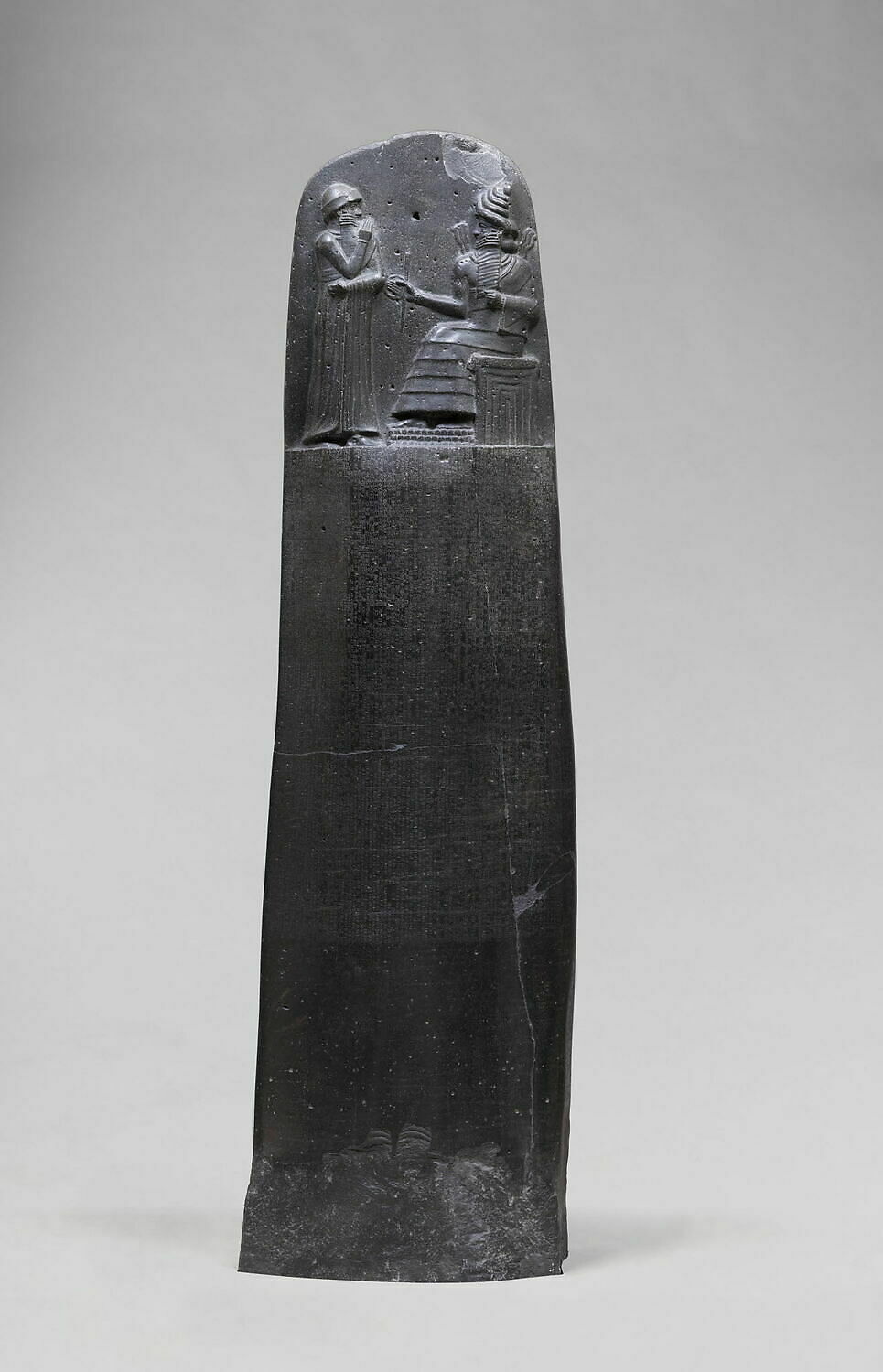
Law Code Stele of King Hammurabi, basalt, Babylonian, 1792–50 B.C.E. (Musée du Louvre, Paris)
- One of the oldest known legal codes, created in ancient Babylon in the 18th century BC.
- It was discovered in 1901 by French archaeologist, Jean-Vincent Scheil.
- Contains 282 laws covering topics such as property rights, trade, and family law.
- The code is famous for the principle of "an eye for an eye, a tooth for a tooth" which is the principle of lex talionis (law of retaliation)
- The code is inscribed on a large stone stele, which stands at over seven feet tall and is written in the Akkadian language using cuneiform script.
- It also includes provisions for the protection of the poor and the disabled, as well as specific penalties for various crimes.
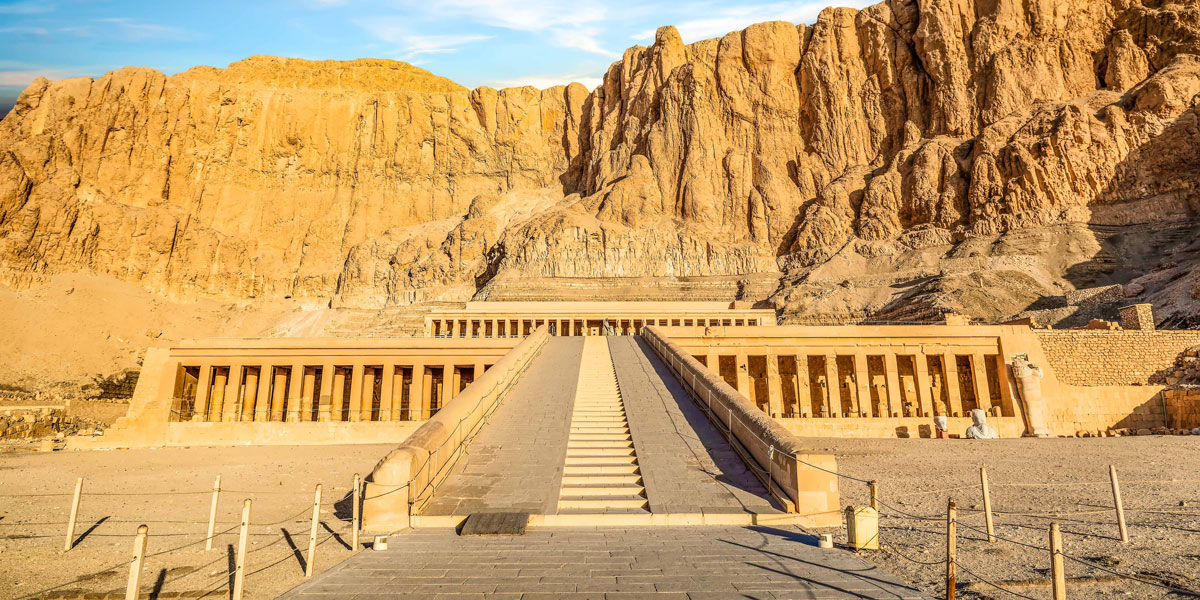
Mortuary Temple and Large Kneeling Statue of Hatshepsut, c. 1479-58 B.C.E., New Kingdom, Egypt.
- A temple built in the 15th century BC in ancient Egypt, dedicated to the pharaoh Hatshepsut.
- Located in the Valley of the Kings, on the west bank of the Nile.
- Considered one of the most beautiful and well-preserved temples of ancient Egypt.
- The temple was built during Hatshepsut's reign as pharaoh and served as a funerary monument for her.
- The temple is known for its intricate carvings and reliefs that depict Hatshepsut's reign and her campaigns in Nubia and Punt.
- It also contains a series of terraces, ramps, and courtyards leading up to the main temple complex.
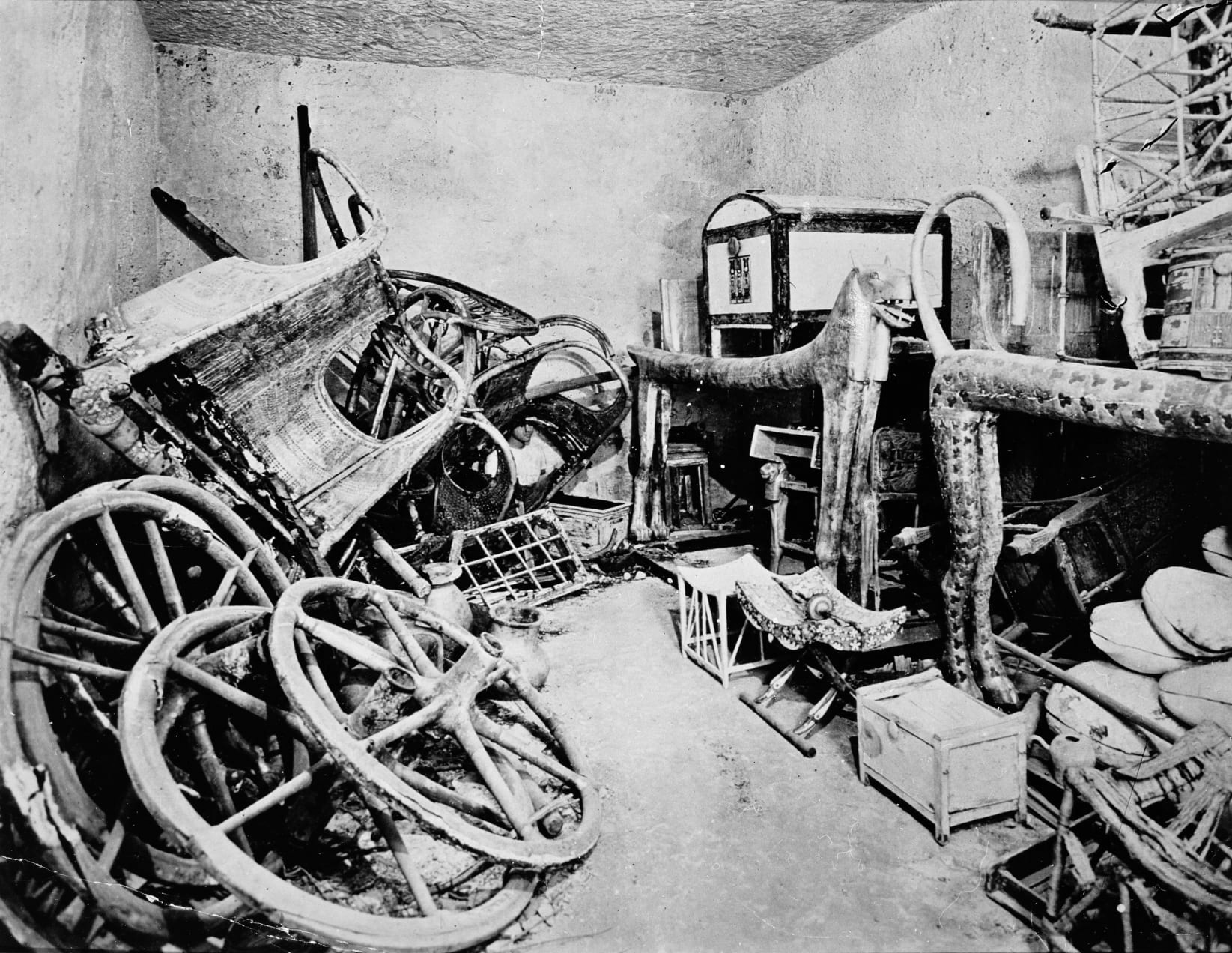
Harry Burton, View of tomb interior, 1922 (Tutankhamun Archive, Griffith Institute, University of Oxford)
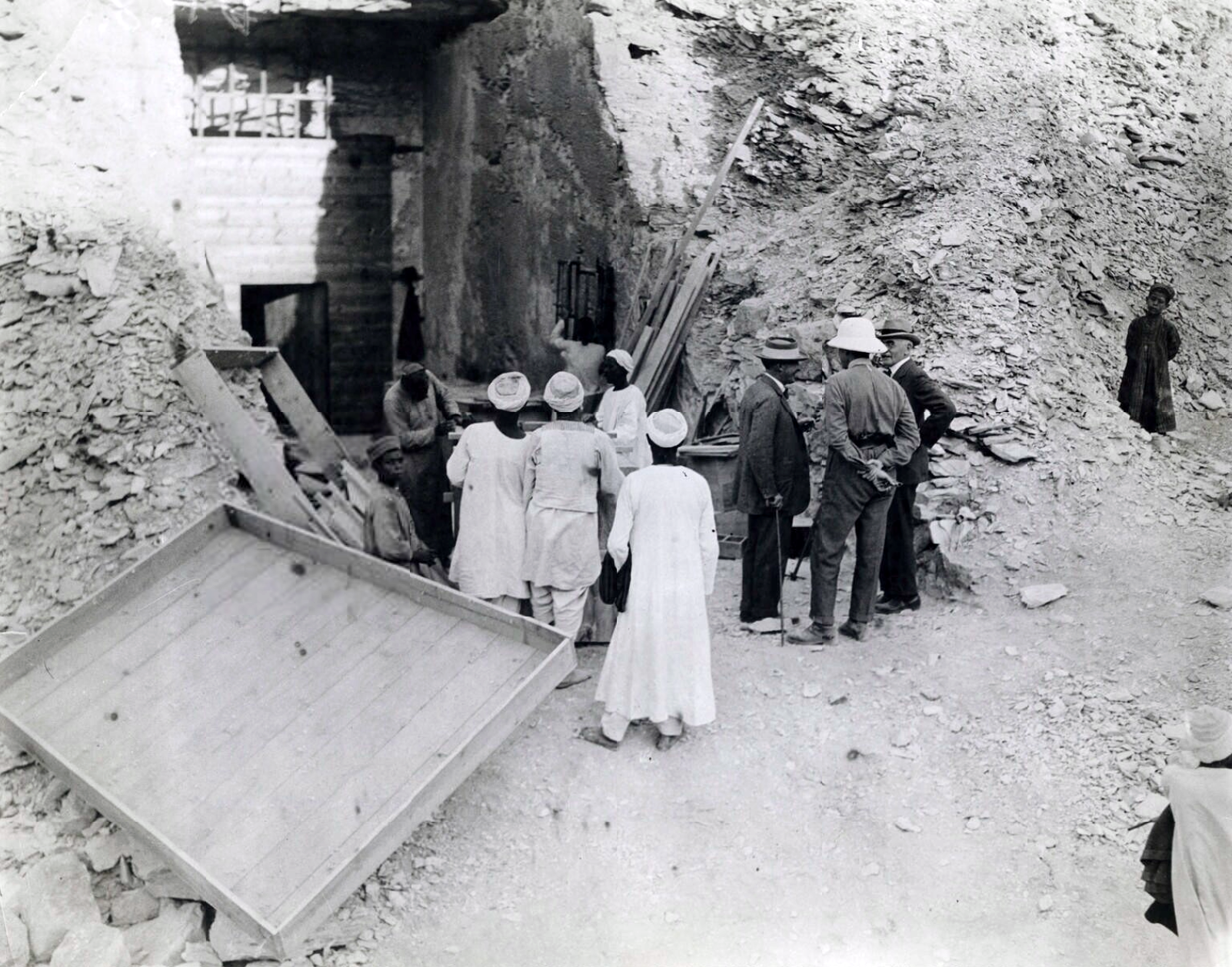
George Edward Stanhope Molyneux Herbert, Fifth Earl of Carnarvon, with Howard Carter during his initial visit to the tomb, 1922, 7 5/8 x 9 5/8 inches (National Portrait Gallery, London; photo: Keystone Press Agency Ltd.)
- The tomb of the 18th-dynasty Egyptian pharaoh Tutankhamun.
- Discovered in 1922 by Howard Carter and Lord Carnarvon in the Valley of the Kings.
- Contains a wealth of artifacts, including the famous golden death mask of Tutankhamun.
- The tomb also contains a series of nested coffins, including the innermost coffin made of solid gold, inlaid with precious stones.
- The tomb also contains a variety of items such as jewelry, statues, and chariots that were buried with the pharaoh to provide for him in the afterlife.
- Tutankhamun's tomb is considered one of the most significant archaeological discoveries of the 20th century.

Tutankhamun’s tomb, innermost coffin, New Kingdom, 18th Dynasty, c. 1323 B.C.E., gold with inlay of enamel and semiprecious stones (Egyptian Museum, Cairo)
- The innermost coffin of Tutankhamun's tomb.
- Made of solid gold and inlaid with precious stones.
- The lid is decorated with the pharaoh's face in profile, and the body of the coffin is decorated with intricate hieroglyphs and religious symbols.
- The innermost coffin was intended to protect the mummy of Tutankhamun and ensure his safe journey to the afterlife.
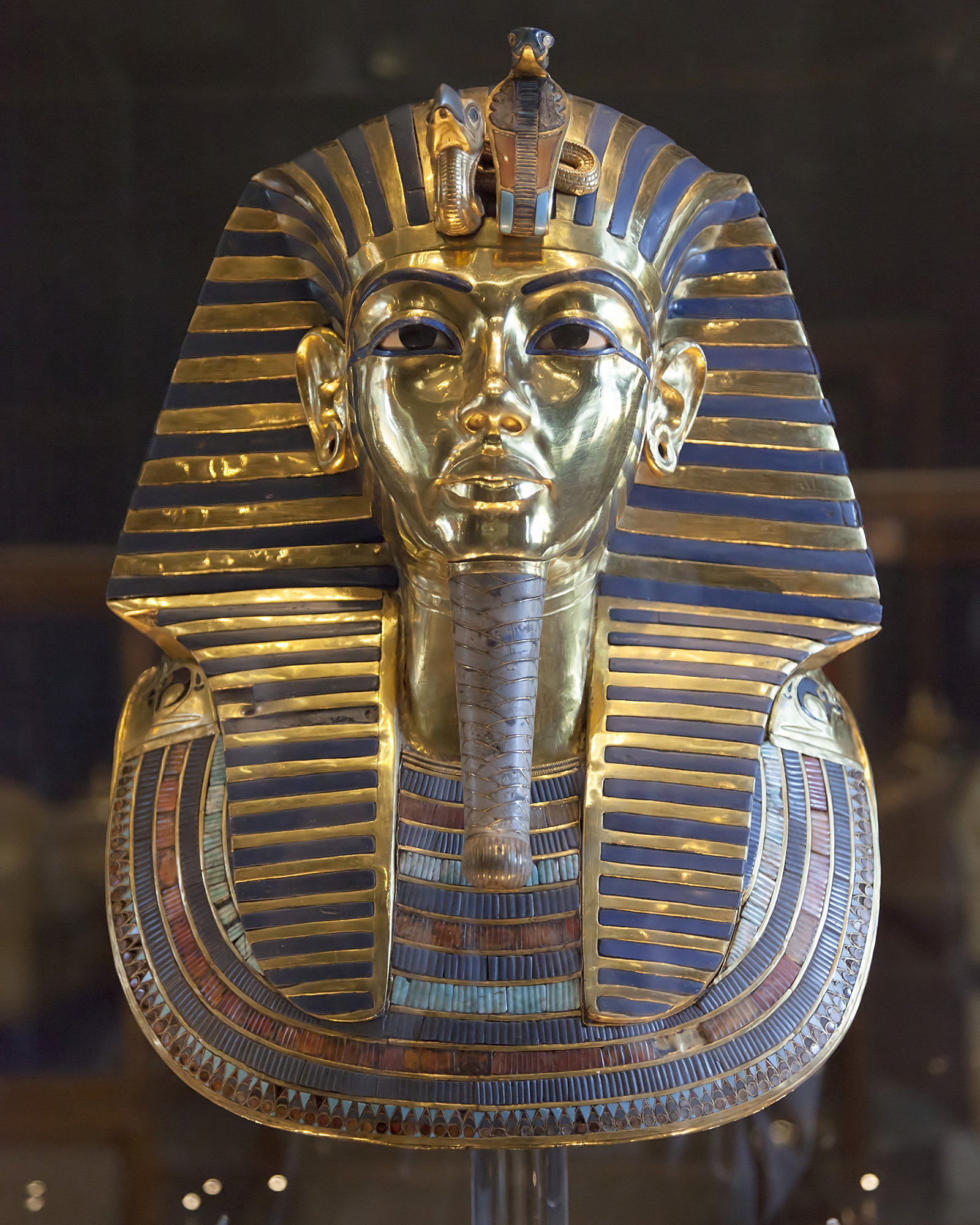
Death Mask from innermost coffin, Tutankhamun’s tomb, New Kingdom, 18th Dynasty, c. 1323 B.C.E., gold with inlay of enamel and semiprecious stones (Egyptian Museum, Cairo) (photo: Roland Unger, CC BY-SA 3.0)
- The death mask of King Tutankhamun is a golden mask that covered the mummy of the pharaoh Tutankhamun.
- It was discovered in the tomb of the pharaoh in the Valley of the Kings in Egypt by Howard Carter in 1922.
- The mask is made of solid gold and is inlaid with glass and semiprecious stones, including lapis lazuli, quartz, and obsidian.
- The mask depicts the king with the traditional false beard and nemes headcloth, which was worn by pharaohs as a symbol of their divine power.
- The mask also features the vulture and cobra symbols of Nekhbet and Wadjet, respectively, which were the protective goddesses of Upper and Lower Egypt.
- The mask is considered one of the most iconic and valuable artifacts of ancient Egypt and is currently on display at the Egyptian Museum in Cairo.
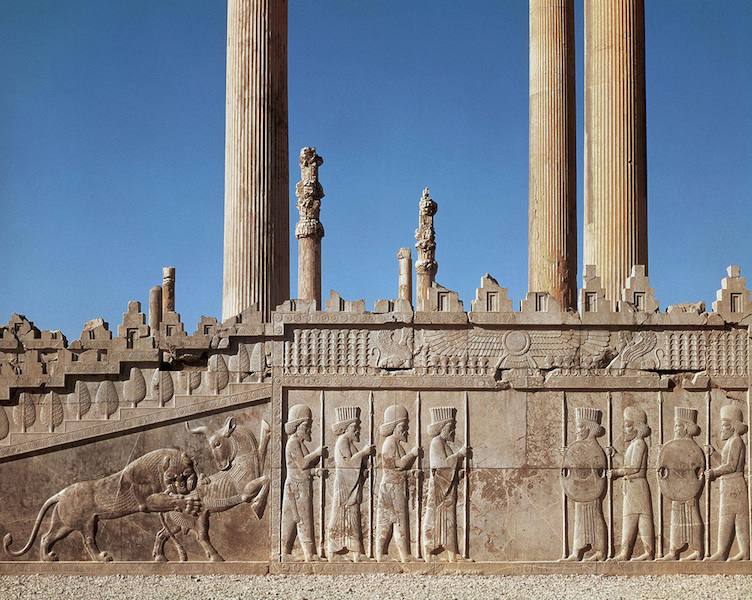
East stairway, Apādana, Persepolis (Fars, Iran), c. 520–465 B.C.E.
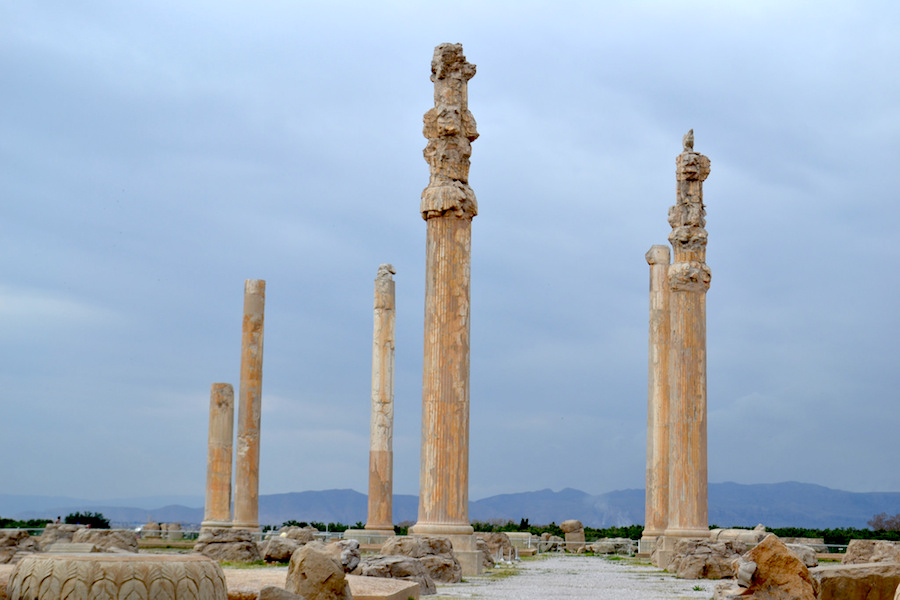
Apādana, Persepolis (Fars, Iran), c. 520–465 B.C.E. (photo: Alan Cordova, CC BY-NC-ND 2.0)
- A large audience hall built in ancient Persia in the 5th century BC.
- Constructed as part of the palace complex at Persepolis by Darius the Great, and later completed by his son Xerxes I.
- Its walls were decorated with reliefs depicting Persian soldiers, officials and tributary nations, and the throne room was decorated with a series of large stone columns.
- The Apadana was used for important state ceremonies and to receive foreign ambassadors.
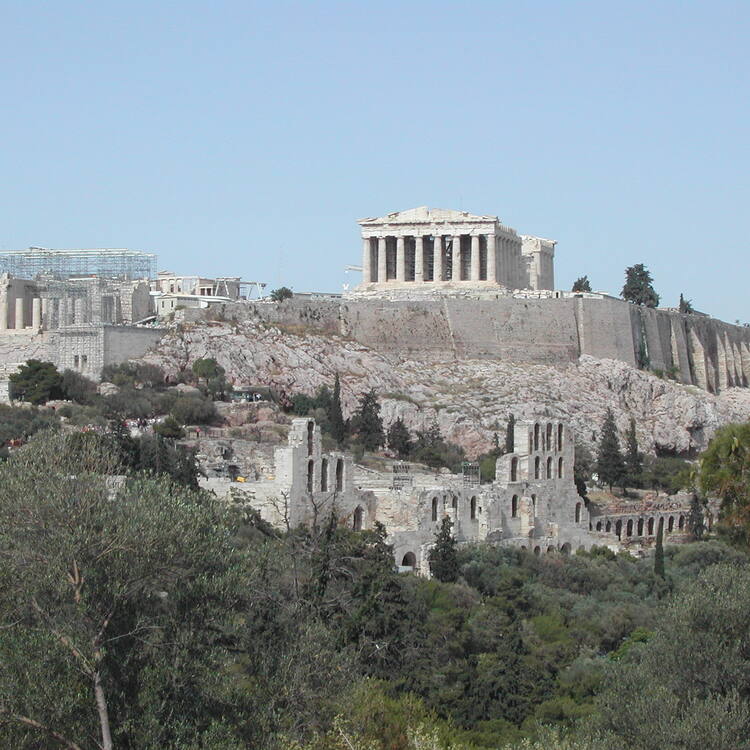
Iktinos and Kallikrates (Phidias directed the sculptural program), Parthenon, Athens, 447 - 432 B.C.E.
- The most famous example is the Acropolis of Athens, which contains the Parthenon, the Erechtheion, the Propylaea, the Temple of Athena Nike, and the Odeon of Herodes Atticus.
- Often served as a religious, political and cultural center in ancient Greece.
- The Acropolis of Athens was built during the 5th century BC and was dedicated to the goddess Athena.
- It was a symbol of the power and prestige of Athens and was also a defensive fortress.
- The Parthenon, the most iconic temple on the Acropolis, is dedicated to Athena Parthenos, the city's patron goddess.
- The Propylaea, the monumental entrance to the Acropolis, is a grand gateway with a central building and two wings.ch contains the Parthenon and other famous structures
- Often served as a religious and cultural center
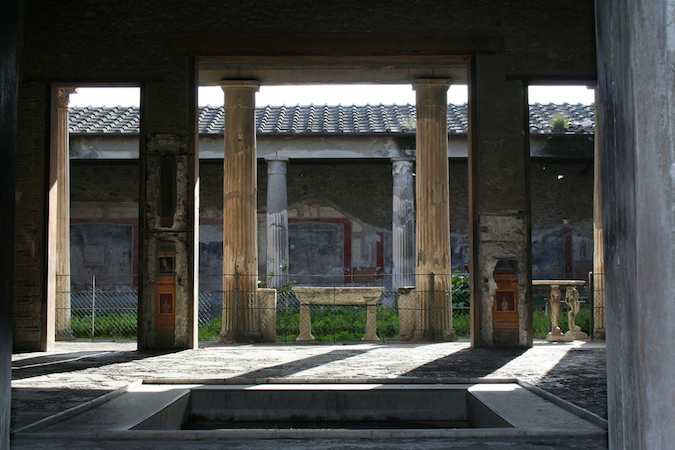
View through atrium to the peristyle, photo: Peter Stewart (CC BY-NC 2.0)
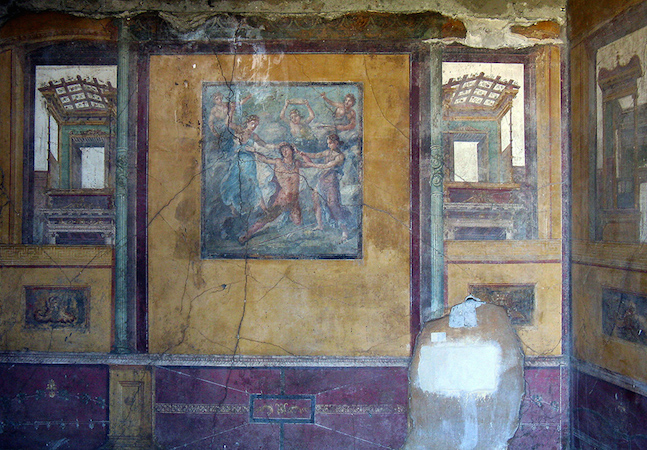
Fourth style wall paintings (from a room off the peristyle), House of the Vettii, Pompeii, photo: Lady Erin (CC BY-NC-ND 2.0)
Myth of Pentheus Painting
- A Roman villa located in the ancient Roman city of Pompeii.
- The villa belonged to two freedmen, Aulus Vettius Conviva and Aulus Vettius Restitutus, who were wealthy merchants.
- The house was preserved by the eruption of Mount Vesuvius in AD 79, which buried Pompeii in ash and pumice.
- It is known for its well-preserved frescoes and mosaics, which depict scenes from Roman mythology and everyday life.
- The house also features a peristyle courtyard, a triclinium (dining room), a lararium (household shrine), and a kitchen.
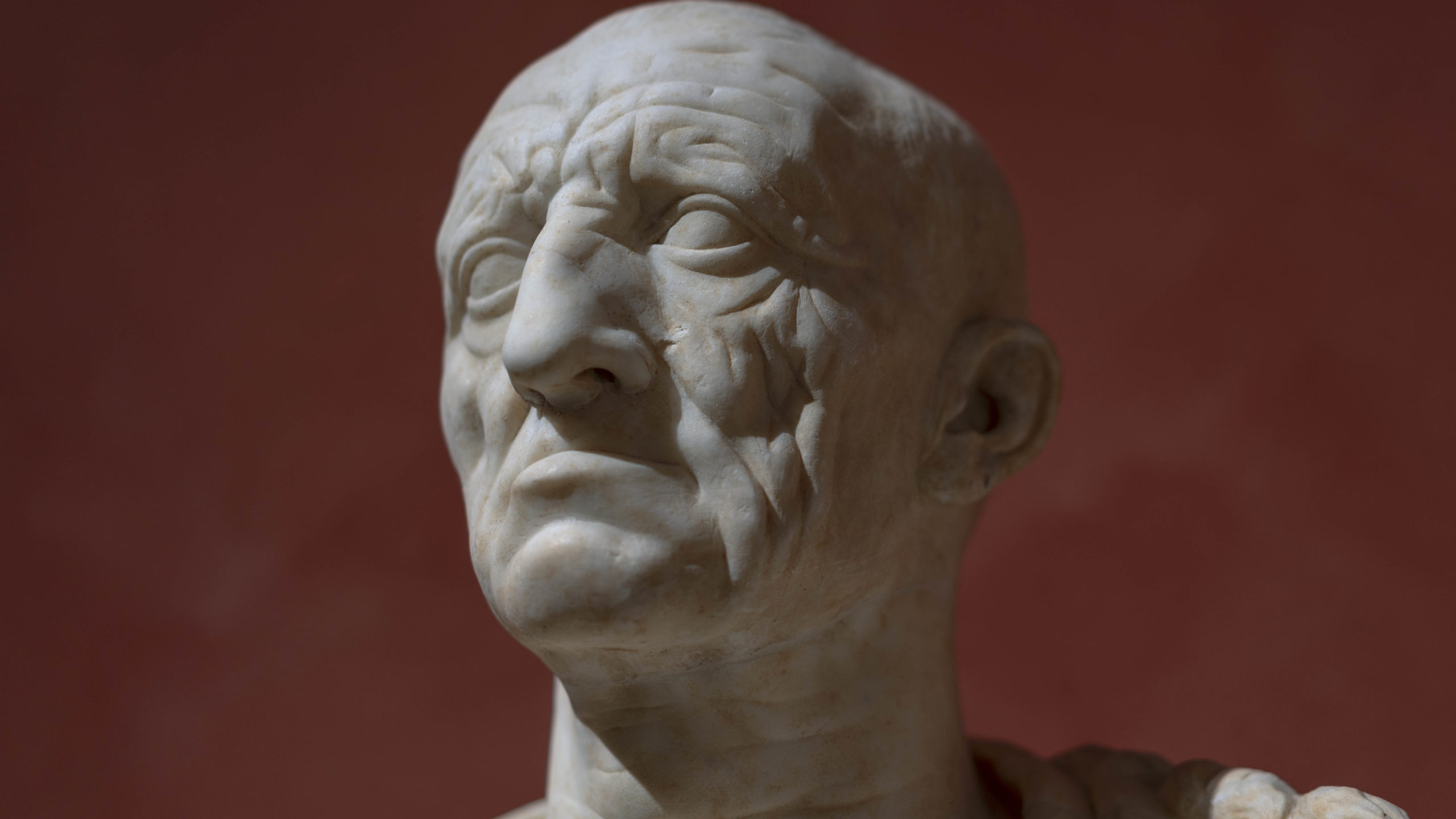
Head of a Roman Patrician from Otricoli, c. 75–50 BCE, marble (Palazzo Torlonia, Rome, photo: Steven Zucker, CC BY-NC-SA 2.0)
- A sculpted head of a Roman patrician, likely dating from the 1st or 2nd century AD.
- The sculpture is made of marble and would have originally been part of a larger statue.
- The head is characterized by its detailed and realistic features, which suggest the individual was a person of high social status.
- The head is also an example of Roman portraiture, which aimed to convey the sitter's individual character and status.
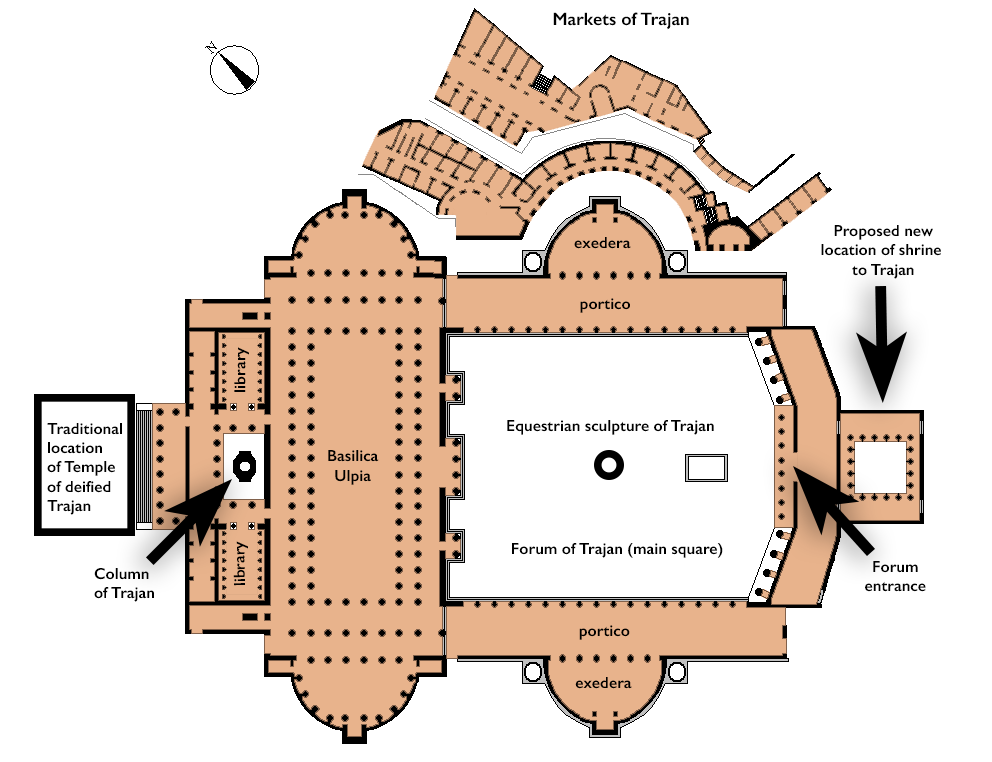
Plan of the Forum of Trajan. Note that the traditional site of the temple of the deified Trajan is shown, but is replaced by a shrine located at the southern side of the forum’s main square (following R. Meneghini) (image: Slånbär, CC BY-SA 3.0, annotated by Smarthistory)
- A large public square in ancient Rome, built by Emperor Trajan between 107 and 112 AD.
- Located on the Quirinal Hill, it was the last of the Imperial fora built in Rome.
- The forum was dedicated to Trajan and featured a large market and shopping area, a basilica (public meeting hall), a temple dedicated to Trajan, and a triumphal arch.
- The forum also featured a large column, known as the Column of Trajan, which stands at over 100 feet tall and is decorated with a spiral relief depicting Trajan's military campaigns in Dacia.
- The forum was also adorned with many statues and monuments, many of which have been preserved and can be seen today in the nearby Trajan's Market.
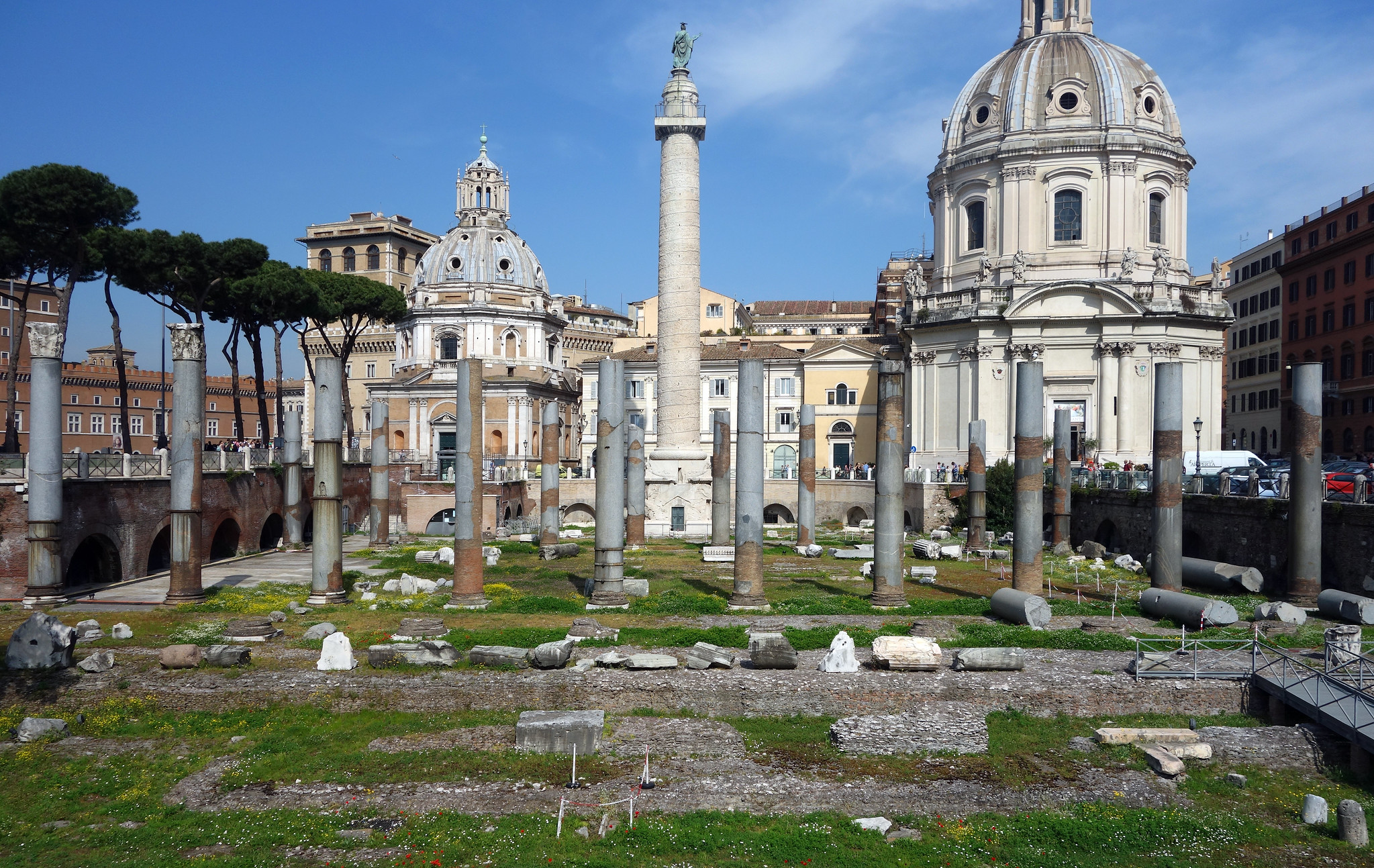
Remains of the Basilica Ulpia in the foreground, and the Column of Trajan in the middle ground (photo: Steven Zucker, CC BY-NC-SA 2.0)
- A monumental public building located in the city of Rome during the Roman Empire
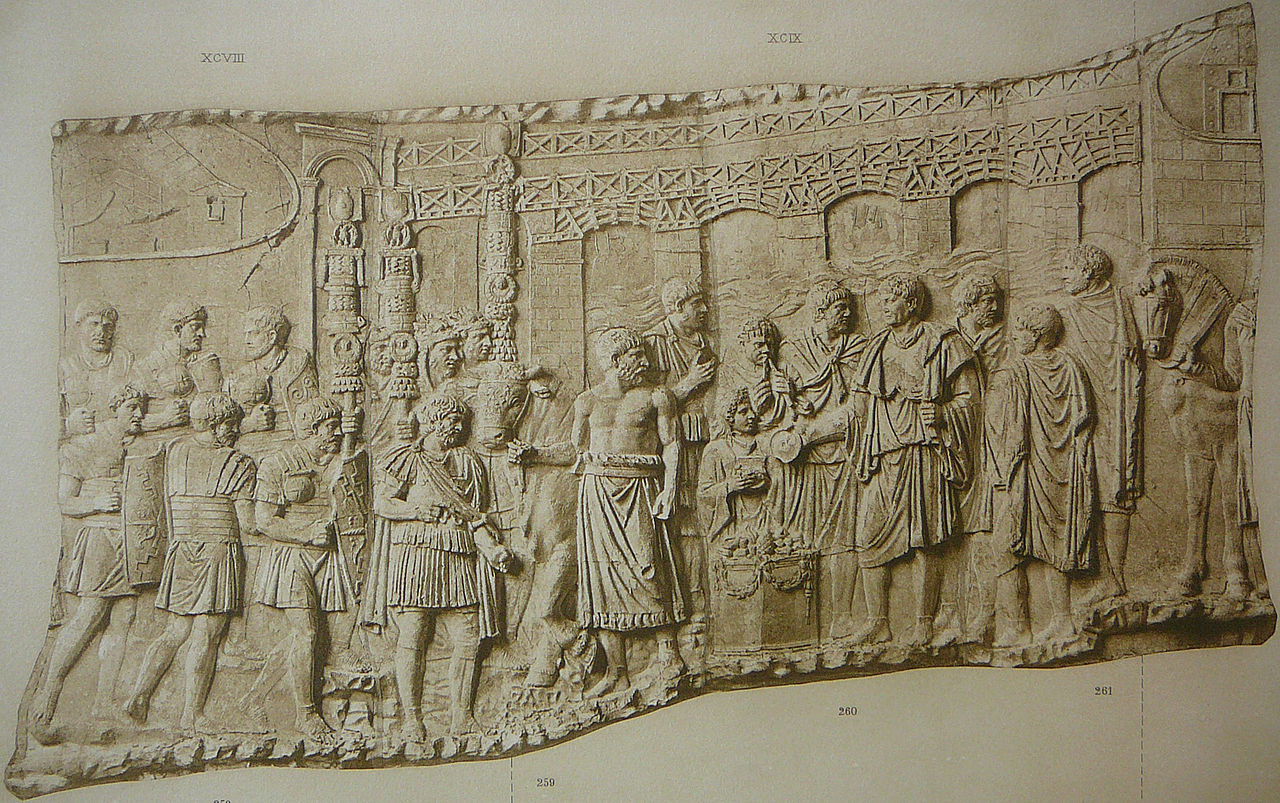
Relief from the Column of Trajan, Carrara marble, completed 113 C.E., showing the bridge in the background and in the foreground Trajan is shown sacrificing by the Danube river (photo: Gun Powder Ma, public domain)
- A monumental column located in Rome, Italy

Fiveable
Resources
© 2025 Fiveable Inc. All rights reserved.